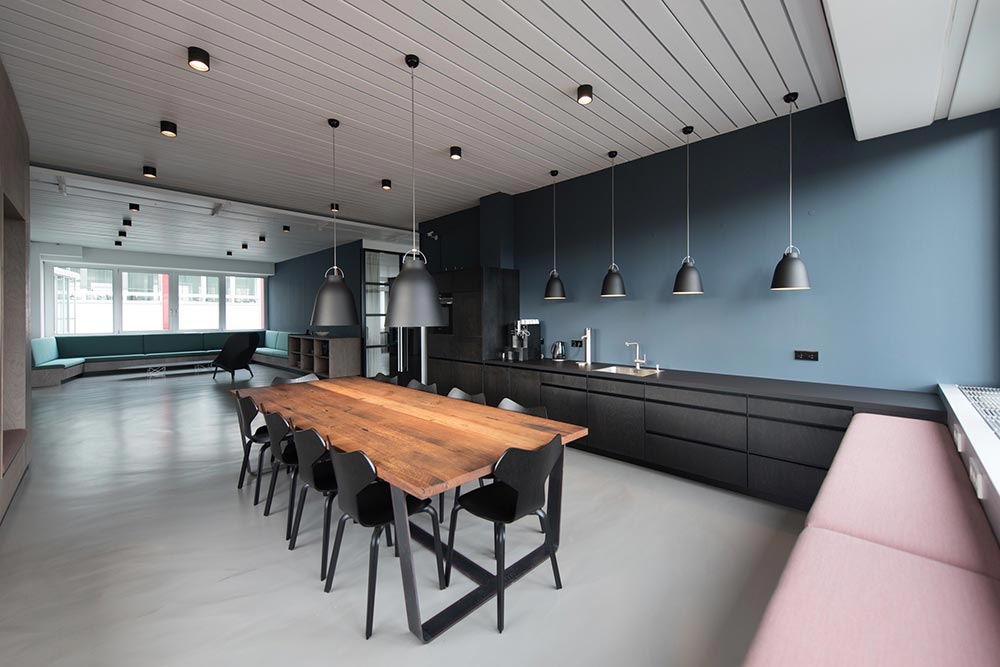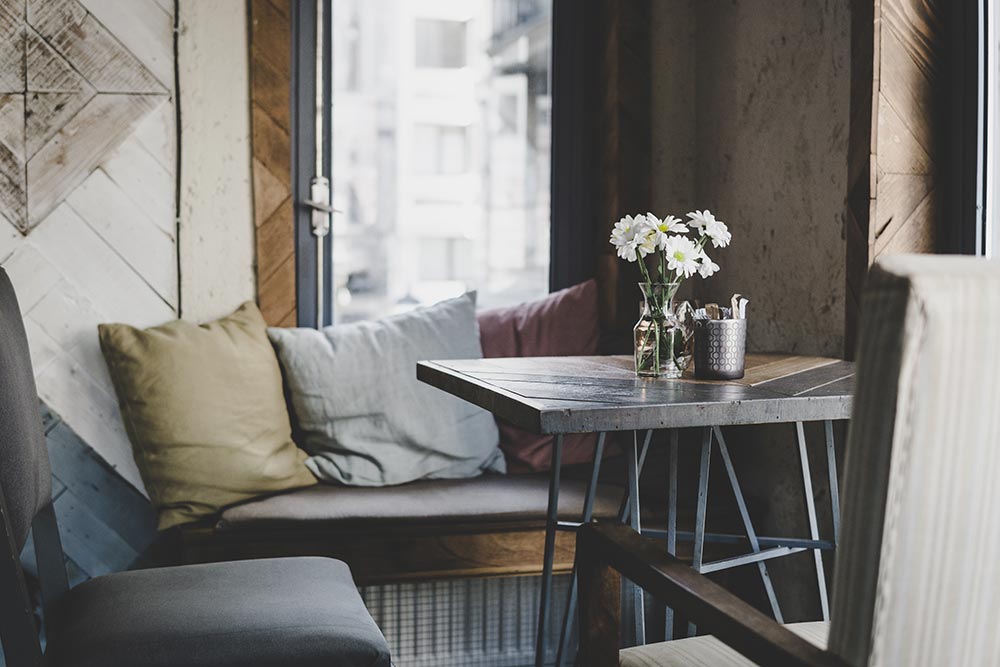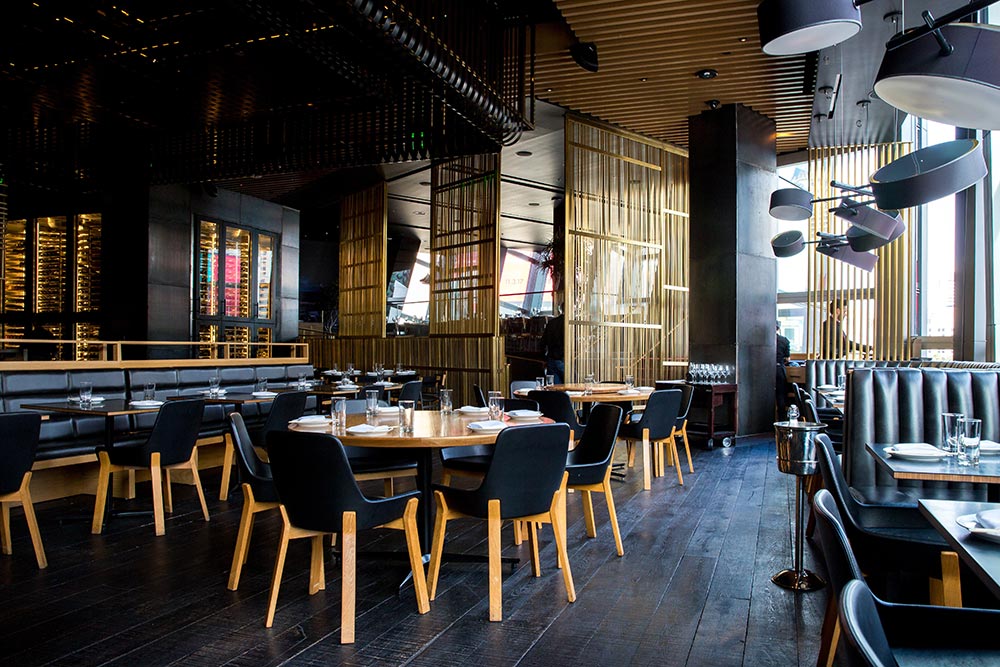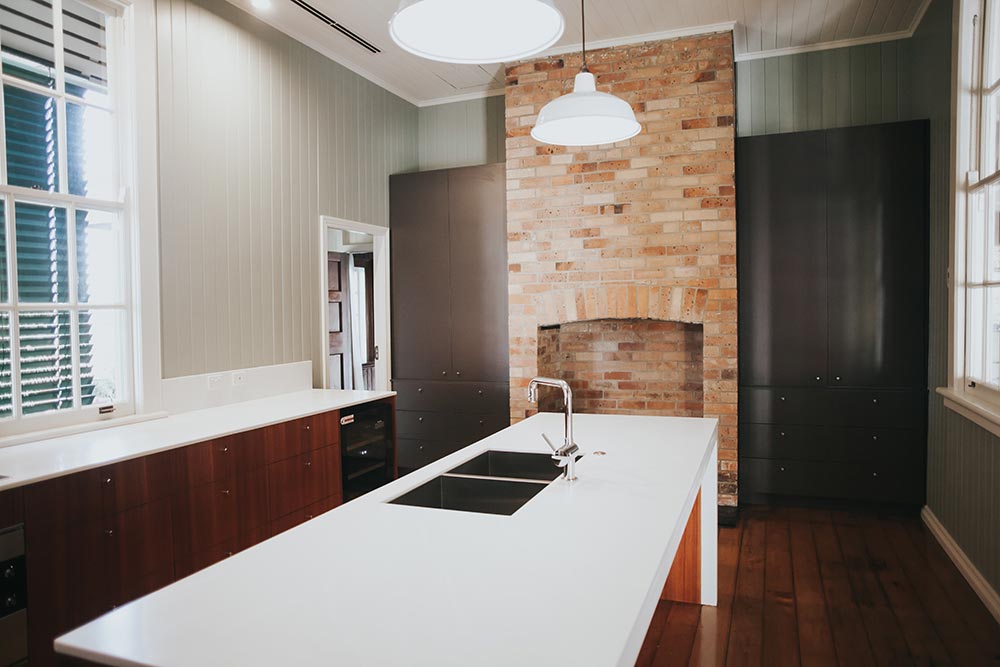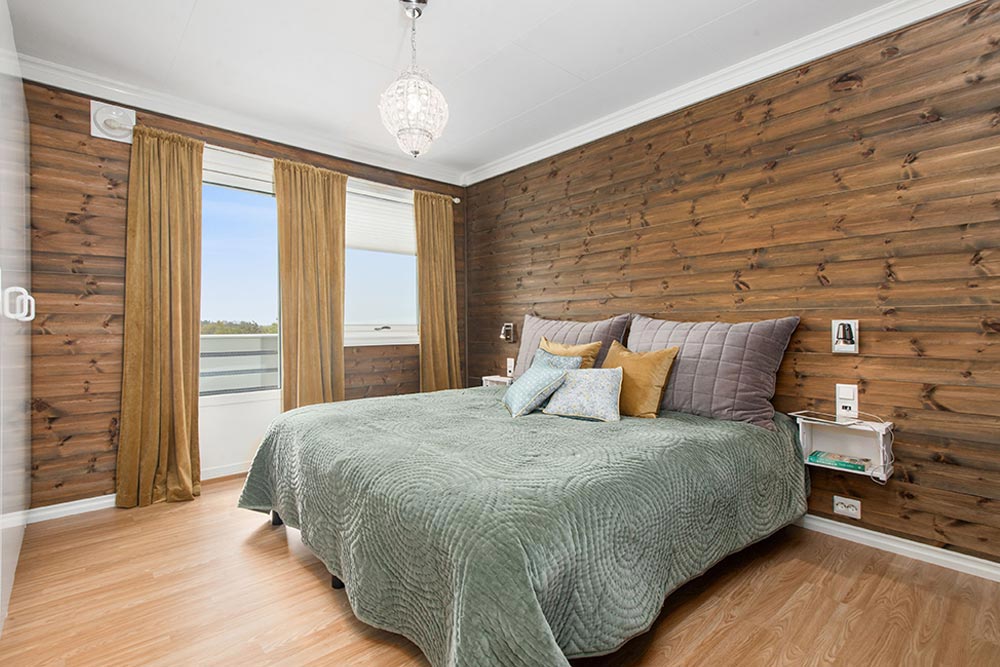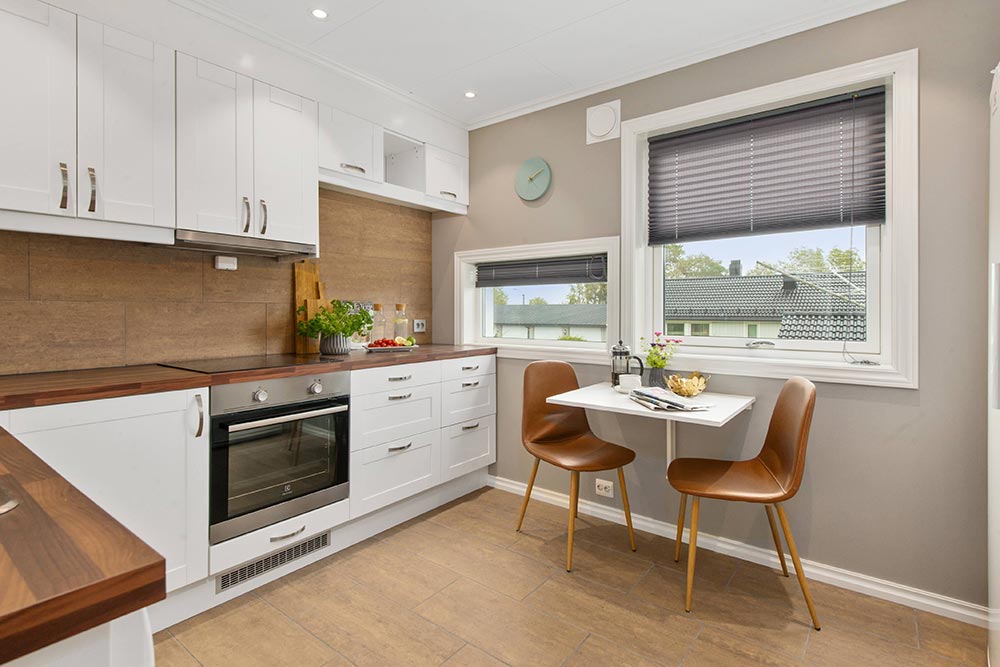
GEORGIA AND DAUGHTER
We Build Inspired Home Spaces.
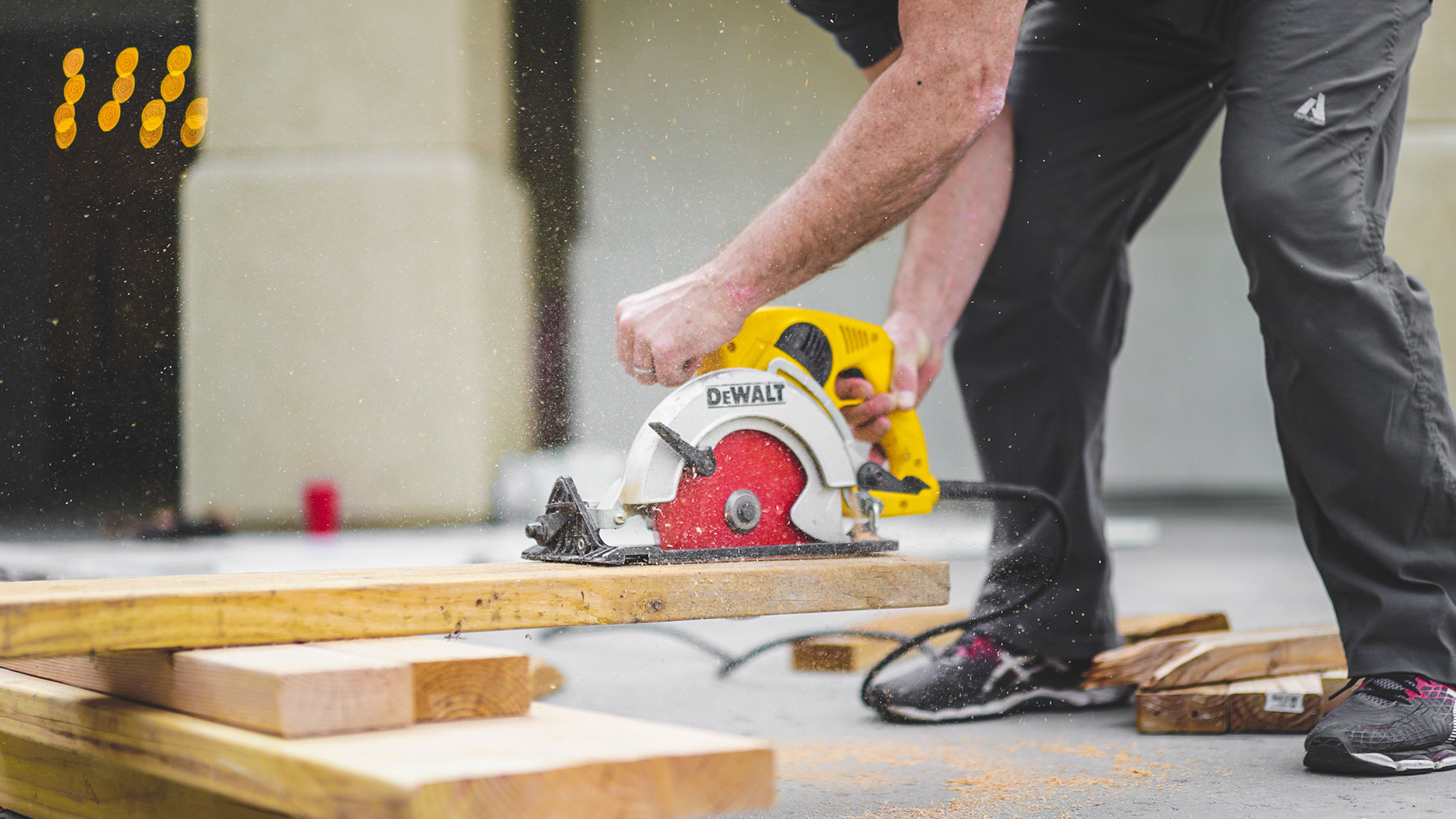
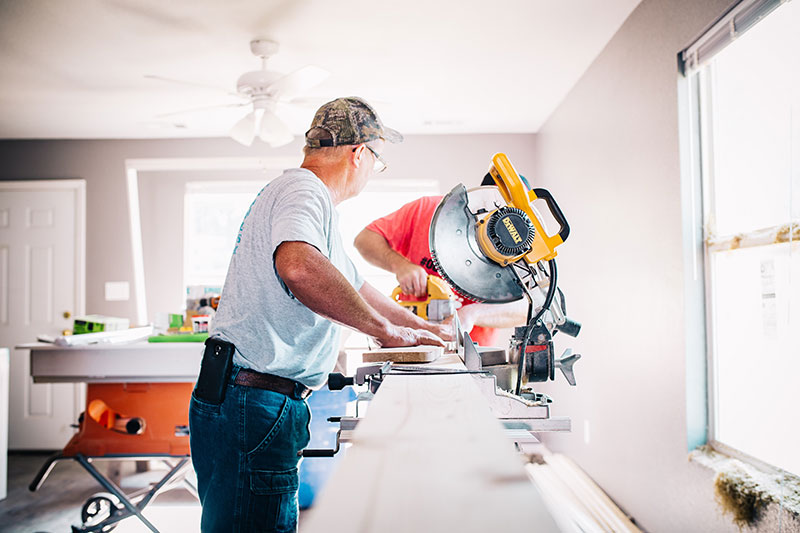
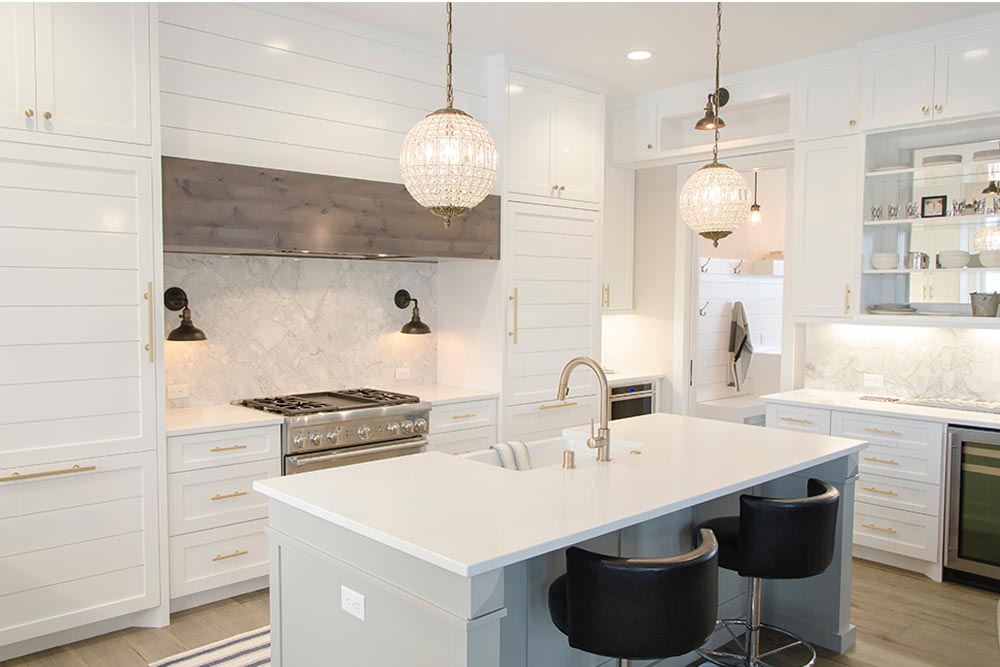
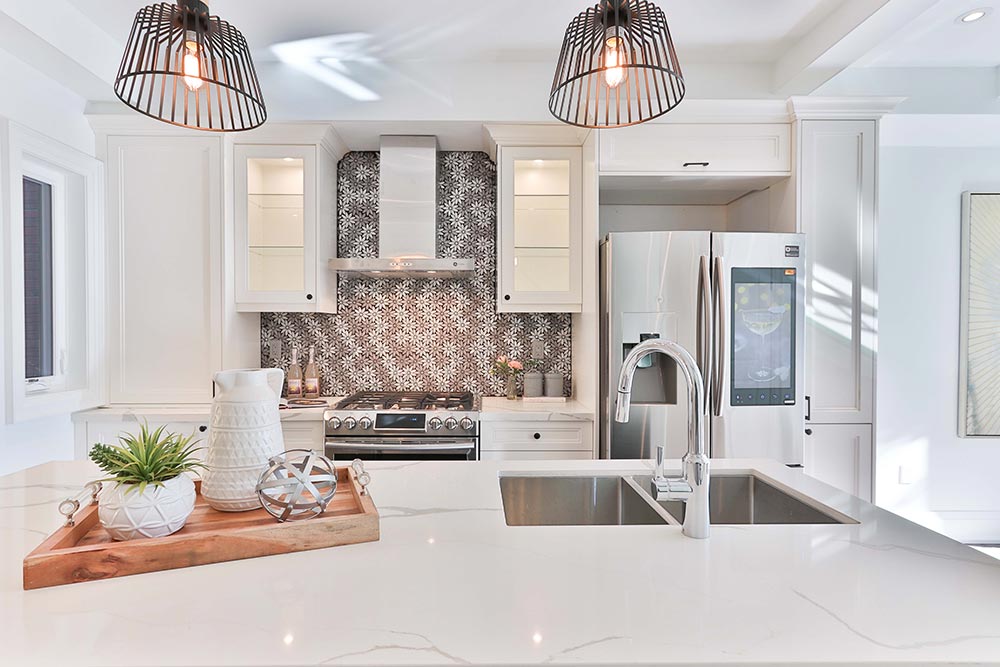
We Bring Ideas Home.
Ut elit tellus, luctus nec ullamcorper mattis, pulvinar dapibus leo. Lorem ipsum dolor sit amet, consectetur adipiscing elit. Ut elit tellus, luctus nec ullamcorper mattis, pulvinar dapibus leo.
- Interior Design
- Architecture
- Project Management
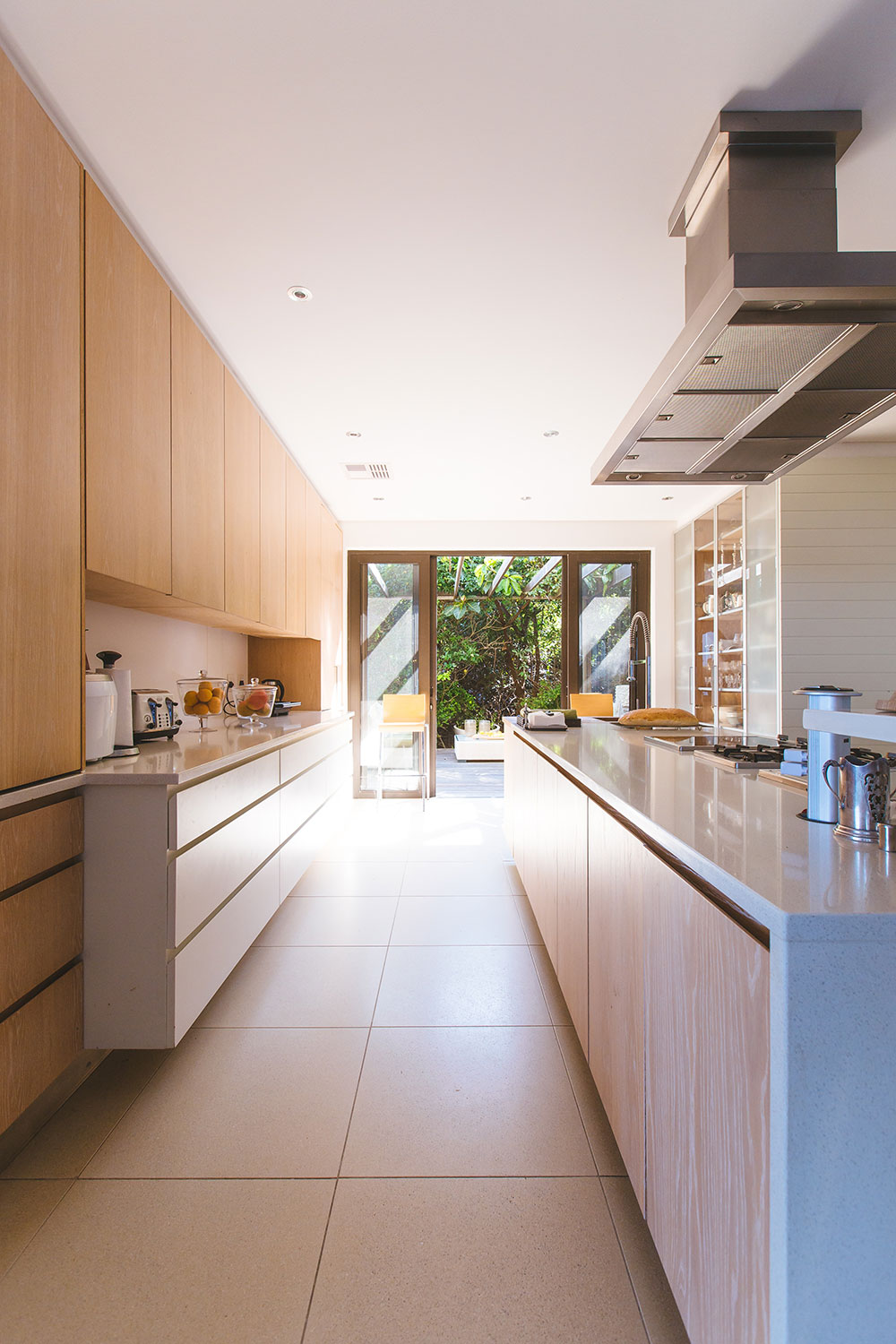
What Is The Most Common Lung Surgery?
Lung surgery is a critical procedure that helps treat various respiratory diseases and conditions. Among the range of lung surgeries performed, lobectomy is considered the most common. A lobectomy involves the removal of one of the lobes of the lung. This procedure is typically used to treat lung cancer, infections, or other conditions that impair lung function.

Given the essential role of the lungs in oxygenating the body, any surgery involving them requires careful planning, expert medical intervention, and a well-executed post-operative care plan.In this article, we will delve deeper into lobectomy as the most common lung surgery, examining the conditions it treats, the procedure itself, recovery, and other surgical options that might be considered depending on the patient’s condition.
Click Look At This For More Details
Conditions Requiring Lung Surgery
There are several conditions that may require lung surgery, with lung cancer being one of the most common reasons. Other conditions, such as chronic infections, emphysema, or even congenital abnormalities, may also necessitate surgical intervention.
Lung Cancer
Lung cancer is the leading cause of death from cancer worldwide, and it is one of the primary reasons people undergo lung surgery. There are two main types of lung cancer:
- Non-small cell lung cancer (NSCLC): The more common type, which is less aggressive than small cell lung cancer.
- Small cell lung cancer (SCLC): A rarer, more aggressive form of cancer that tends to spread more quickly.
When lung cancer is detected early, surgery may be the best option to remove the tumour and prevent further spread. The extent of surgery depends on the tumour’s size, location, and whether the cancer has spread to surrounding tissues or lymph nodes.
Infections
Chronic infections, such as tuberculosis or bacterial pneumonia, can lead to significant damage in the lungs, causing the destruction of lung tissue and impaired function. In cases where infections are resistant to antibiotics or are causing severe complications, a surgeon may opt for a lobectomy to remove the infected part of the lung.
Emphysema And Chronic Obstructive Pulmonary Disease (COPD)
Emphysema is a form of chronic obstructive pulmonary disease (COPD) characterised by damage to the alveoli, or air sacs, in the lungs. As the condition worsens, parts of the lung become irreversibly damaged, and the lung loses its ability to expand and contract effectively.
In some severe cases of emphysema, a surgery called lung volume reduction surgery (LVRS) may be performed, which involves removing the damaged parts of the lungs to improve breathing function.
Pulmonary Fibrosis
Pulmonary fibrosis refers to the scarring or thickening of lung tissue, which makes it difficult for the lungs to work properly. In severe cases of pulmonary fibrosis, when the scarring has significantly affected lung function, a lung transplant or a lobectomy may be considered to remove the damaged tissue and improve overall respiratory function.
Lobectomy: The Most Common Lung Surgery
Among the various surgical options for treating lung conditions, lobectomy remains the most commonly performed procedure. It is often used to treat lung cancer, but it can also be employed for other diseases or abnormalities.
What Is Lobectomy?
A lobectomy is a surgical procedure where one lobe of the lung is removed. This surgery may be performed to treat a tumour, chronic infections, or other lung diseases that have caused significant damage to the lung tissue. Depending on the extent of the disease, a wedge resection (removal of only a small section of lung tissue) or a pneumonectomy (removal of the entire lung) may also be necessary, although these are less common than a lobectomy.
Types Of Lobectomy
- VATS Lobectomy (Video-Assisted Thoracoscopic Surgery): VATS is a minimally invasive technique where the surgeon uses small incisions and a video camera to guide the procedure. This approach reduces recovery time and complications compared to traditional open surgery.
- Open Lobectomy: This involves a larger incision in the chest to allow the surgeon full access to the lung. Open lobectomy is generally performed when the tumour is larger or in a location that is difficult to reach with VATS.
- Robotic-Assisted Lobectomy: A newer technique that uses robotic arms to enhance the precision of the surgery. This approach combines the benefits of minimally invasive surgery with advanced technology to improve outcomes.
The Procedure: How Is A Lobectomy Performed?
Lobectomy, whether performed via VATS or open surgery, generally follows a similar set of steps:
- Anaesthesia: The patient is put under general anaesthesia to ensure they are unconscious and pain-free during the surgery.
- Incision: For VATS, a small incision is made on the side of the chest, through which a tiny camera (thoracoscope) is inserted to guide the surgeon. In open lobectomy, a larger incision is made to give the surgeon more direct access to the lung.
- Removal of the Lobe: The surgeon isolates the affected lobe, cutting through blood vessels and airways connecting it to the rest of the lung. The lobe is then removed, and any remaining lung tissue is sealed off to prevent air leaks.
- Closure: Once the procedure is complete, the incisions are closed, and a drainage tube may be inserted temporarily to remove any excess fluid or air from the chest cavity.
- Recovery: After the surgery, the patient is closely monitored in a recovery room for a few hours. They are typically kept in the hospital for several days for observation and to manage pain and any complications.
Recovery After Lobectomy
Recovery after a lobectomy can vary depending on the type of surgery performed (VATS vs. open lobectomy), the patient’s overall health, and the reason for the surgery. Generally, the recovery process involves the following:
- Hospital Stay: Most patients stay in the hospital for 3-7 days, during which they are monitored for complications such as infections or bleeding.
- Pain Management: Pain after lobectomy is common, but it can be managed with medications. Patients are usually given painkillers to keep them comfortable during recovery.
- Breathing Exercises: After surgery, patients are encouraged to perform deep breathing exercises to help expand the lungs and prevent complications like pneumonia.
- Physical Activity: Physical activity should be gradually increased after surgery, as exercise helps promote lung function and overall recovery. However, patients should avoid heavy lifting or strenuous activities for several weeks.
- Follow-up Care: Regular follow-up appointments with the surgeon are crucial to ensure that healing is progressing and to detect any signs of complications, such as infections or recurrence of cancer.
Risks And Complications
As with any surgery, lobectomy carries certain risks, including:
- Infection: Any surgery carries the risk of infection, especially since the lungs are directly involved.
- Air Leaks: A potential complication where air leaks from the lung into the chest cavity, which may require additional treatment.
- Bleeding: While rare, significant bleeding can occur during surgery.
- Pneumonia: Pneumonia can develop after surgery, particularly if the patient has a weakened immune system.
- Recurrence of Disease: In the case of cancer, there is always the possibility that the disease could return after surgery, which requires further treatment or intervention.
Conclusion
Lung surgery, specifically lobectomy, plays a vital role in the treatment of lung diseases, particularly lung cancer. By removing the diseased portion of the lung, doctors aim to improve the patient’s lung function, quality of life, and survival chances. While lobectomy is a common and generally safe procedure, it carries risks, and recovery can be challenging.
However, with modern surgical techniques such as VATS and robotic-assisted surgery, recovery times have been reduced, and patient outcomes have improved. If you’re considering or undergoing lung surgery, it’s essential to discuss all available options with your doctor. They can provide guidance based on your specific condition, ensuring the best possible care and outcome.
Frequently Ask Question
Why Is A Lobectomy Performed?
A lobectomy is primarily performed to treat lung cancer when the tumour is confined to one lobe of the lung and has not spread to other areas. It may also be used in cases of severe lung infections, like tuberculosis, or in patients with chronic obstructive pulmonary disease (COPD), where a portion of the lung is damaged. The surgery is intended to improve the patient’s lung function by removing the damaged or diseased tissue. A lobectomy can also help prevent the disease from spreading to other parts of the lung or body.
What Are The Risks Of Lung Surgery?
As with any major surgery, lung surgery carries risks, including bleeding, infection, and complications related to anaesthesia. Specific risks for lung surgery include damage to surrounding organs, such as the heart or diaphragm, and the possibility of air leaks from the lung. There is also the risk of lung collapse, which may require further medical intervention. After surgery, some patients may experience shortness of breath or reduced lung function, but these effects often improve over time with rehabilitation and breathing exercises.
How Is A Lobectomy Performed?
A lobectomy can be performed using either traditional open surgery or minimally invasive techniques. In traditional surgery, a large incision is made in the chest to access the lung. In minimally invasive surgery, a series of smaller incisions are made, and a camera and specialised tools are used to remove the lobe of the lung. The choice of technique depends on the size, location of the tumour, and the patient’s overall health. The surgeon will also decide the best approach based on the potential risks and benefits for the patient.
How To Decide On A Honeymoon Location?
Deciding on the perfect honeymoon location is one of the most exciting and important decisions that couples make. After all the hustle and bustle of planning a wedding, choosing a romantic destination that suits both partners can be a fun way to kick off the beginning of married life.

The ideal honeymoon destination sets the tone for the start of your journey together, so it’s crucial to consider several factors that will make your getaway not just memorable but truly special. Below, we explore various considerations that will help you choose the best honeymoon location, with an emphasis on Australian spelling and perspectives.
Click More Helpful Hints For More Details
Things To Consider When Choosing a Honeymoon Location
Define Your Budget
One of the first things to consider when deciding on a honeymoon location is your budget. Setting a realistic budget is crucial because it helps narrow down your options and ensures that you don’t overspend. A honeymoon is a once-in-a-lifetime trip, but it shouldn’t come at the cost of financial strain.
- All-Inclusive Packages: Look into all-inclusive resorts where meals, activities, and entertainment are included. These can be a great option for couples who want to avoid hidden fees and enjoy peace of mind while travelling.
- Splurge or Save: If you’ve had a more modest wedding budget, you may want to choose a more affordable honeymoon destination to balance your finances. Alternatively, if your wedding was relatively low-cost, you might opt for a more luxurious trip to mark the occasion.
- Hidden Costs: Be sure to account for extras such as transportation, tips, excursions, and souvenirs, which can quickly add up. Be upfront with your travel agent or resort about what’s included in the price so you know exactly what to expect.
Consider The Type Of Experience You Want
The nature of your honeymoon should align with your relationship’s personality and the type of experience you both envision. Are you looking for a relaxing beach getaway, an adventurous mountain trek, or a cultural city exploration? The kind of experience you want can greatly influence your choice of destination.
- Beach and Relaxation: If you both want to unwind, think about destinations that offer serene beaches, luxury resorts, and spa experiences. Consider places like the Maldives, Fiji, or the Whitsunday Islands in Australia.
- Adventure and Exploration: If you’re more of an adventurous type, you might prefer a location that offers hiking, safaris, or exploration of remote areas. Some great options include New Zealand, Bali, or Africa, which provide ample opportunities for adventure while also offering luxurious resorts for some downtime.
- Cultural Exploration: For couples who enjoy history and architecture and are immersing themselves in new cultures, consider destinations like Europe or Asia. Rome, Paris, Kyoto, and Bali offer a deep cultural experience with plenty of activities and attractions to explore.
Season And Weather
The time of year you choose for your honeymoon plays a significant role in deciding the destination. It’s important to consider both the weather and peak travel seasons for the locations you’re interested in.
- Best Time to Visit Australia: If you are looking for a honeymoon destination within Australia, the best time to visit depends on the region. For example, the warmer months between October and April are ideal for the Great Barrier Reef, Queensland, and the Whitsundays. Meanwhile, if you’re planning to visit Tasmania, the summer months between December and February offer the most pleasant weather.
- Tropical and Beach Destinations: For tropical beach destinations like the Maldives, Fiji, or Bali, consider the wet seasons, which can vary. Bali, for instance, experiences the wet season from October to March, which may not be the best time to visit if you want to avoid rain.
- Avoiding Crowds: Keep in mind that peak tourist seasons, such as Christmas or summer holidays, may mean higher prices and more crowded destinations. If you prefer privacy and tranquillity, you might want to avoid travelling during peak periods.
Distance And Travel Time
The length of your honeymoon trip is a key factor in choosing a location. Are you planning for a weeklong getaway or a longer vacation? Also, consider the amount of time you’re willing to spend travelling, as long flights or long road trips may leave you feeling exhausted.
- Long Haul vs. Short Haul: If you’re based in Australia and prefer to limit the time spent on travel, look into destinations in the South Pacific or Southeast Asia that are a few hours’ flights away. Locations such as Fiji, Bali, or New Zealand offer a great balance of distance and travel time, with flights typically ranging from 3 to 8 hours.
- Multiple Destinations: If you have more time and want a variety of experiences, consider a multi-destination honeymoon. For example, you could visit a city like Paris for a few days and then spend some time unwinding on the beaches of the French Riviera or opt for an adventurous safari in Africa followed by some relaxation on the beach in Mauritius.
Research Unique Destinations
While popular honeymoon spots like Bali, the Maldives, or Santorini are stunning, sometimes couples want to explore more unique or less-travelled locations for their honeymoon. Choosing an off-the-beaten-path destination can offer a sense of adventure and intimacy that more crowded tourist spots may lack.
- Australian Hidden Gems: If you’re looking for a domestic honeymoon, consider some of Australia’s hidden gems. For example, Kangaroo Island in South Australia offers beautiful beaches, wildlife, and luxury accommodations in a peaceful setting. The Daintree Rainforest in Queensland offers a tropical escape with a chance to explore one of the world’s oldest rainforests.
- Exotic Locations: If you’re considering international travel, places like the Galapagos Islands or the Azores in Portugal offer stunning natural beauty, unique wildlife, and an intimate atmosphere. These types of locations allow for rare experiences, which are perfect for a honeymoon that stands out.
Romantic Activities And Amenities
Think about the activities you’d like to enjoy as a couple. Whether it’s sunset dinners, exploring local cultures, or indulging in spa treatments, the amenities available at your chosen destination can make or break the experience.
- Spa and Wellness: If relaxation is key to your honeymoon, opt for destinations known for their luxurious resorts and wellness centres. Many destinations in Bali, Thailand, and Fiji offer world-class spa treatments, yoga retreats, and tranquil surroundings perfect for unwinding.
- Adventurous Activities: For couples looking for more active pursuits, select destinations that offer a variety of outdoor activities such as hiking, snorkelling, scuba diving, or wildlife safaris. A honeymoon in New Zealand, for instance, could include bungee jumping, skydiving, and scenic walks.
- Romantic Settings: Look for destinations that offer romantic settings, such as private beach dinners, candlelit rooms, or scenic sunset cruises. Many islands in the South Pacific, such as Bora Bora, offer these types of private romantic experiences.
Cultural And Environmental Considerations
Cultural and environmental awareness is important when travelling. It’s essential to choose a destination that respects local traditions and offers sustainable travel options, allowing you to enjoy your honeymoon while being respectful of the local environment and culture.
- Cultural Sensitivity: When visiting foreign countries, it’s important to understand and respect local customs, dress codes, and traditions. For example, in some parts of Asia and the Middle East, it’s expected that you dress modestly when visiting temples or religious sites.
- Sustainable Travel: Many couples today are interested in sustainable travel options. Look for resorts that have adopted eco-friendly practices such as water conservation, renewable energy, and sustainable food sourcing. This can ensure that your honeymoon is not only beautiful but also responsible.
Consider Health And Safety
Health and safety should always be a priority when selecting a honeymoon destination. Research the local health facilities, whether vaccinations are necessary, and any safety concerns about the location you plan to visit.
- Vaccinations and Travel Health: Some countries may require specific vaccinations or medications before you travel. For example, some South American and African countries may require yellow fever vaccinations. It’s best to consult with a travel clinic or your doctor a few months before your wedding to ensure you’re up to date with necessary health precautions.
- Safety: Always research the safety level of the country or region you are considering, including travel advisories and local issues. Avoid regions known for political instability or high crime rates to ensure peace of mind during your honeymoon.
Read Reviews And Seek Recommendations
When narrowing down your honeymoon location, it’s always helpful to read reviews and get recommendations from other couples who have already been to those destinations. Online travel forums, blogs, and social media can be excellent resources for first-hand insights and tips.
- Tourism Websites and Blogs: Many travel bloggers share detailed accounts of their honeymoon experiences, providing invaluable information on what to expect, where to stay, and what to do at various destinations.
- Word of Mouth: Don’t hesitate to ask friends and family for their honeymoon recommendations. Personal experiences can often provide the most trustworthy advice.
Conclusion
Choosing the right honeymoon destination is an exciting decision that requires thoughtful consideration of multiple factors. From your budget and the type of experience you want to the season, weather, and travel time, each detail plays a role in crafting the perfect honeymoon.
Whether you’re seeking a luxurious beach retreat, an adventurous exploration, or a cultural immersion, it’s important to choose a location that aligns with both your personalities and interests as a couple.By taking into account these factors, you can create the ideal honeymoon that not only marks the beginning of your married life but also provides memories that will last a lifetime. After all, your honeymoon is your first adventure together—make it one you’ll cherish forever.
Frequently Ask Question
What Are Some Popular Honeymoon Destinations In Australia?
Australia offers a range of beautiful and romantic honeymoon destinations. The Great Barrier Reef provides an idyllic spot for beach lovers and those looking to explore underwater worlds. For a more tranquil setting, head to the Whitsunday Islands or the pristine beaches of Byron Bay. Tasmania is perfect for nature lovers who want to hike and enjoy the wilderness, while a visit to Kangaroo Island offers wildlife experiences. Whether you’re looking for relaxation or adventure, Australia has something for every couple.
Is It Better To Book A Honeymoon Package Or Plan It Independently?
Booking a honeymoon package can offer convenience and ease, as it typically includes accommodation, flights, transfers, and some activities. This is a great option for couples who prefer a stress-free experience with everything organised for them. However, planning independently allows for more flexibility and the chance to create a personalised itinerary based on your interests. Consider your preferences and comfort level—if you want to explore specific destinations or enjoy a more tailored experience, independent planning might be the best choice.
What Makes A Honeymoon Destination Romantic?
Romance can be found in many places, but a great honeymoon destination typically offers privacy, beautiful scenery, and a chance to enjoy quality time together. A romantic destination might have candlelit dinners, stunning sunsets, or quiet beaches where you can relax without distractions. Many couples also enjoy destinations with cultural or historical significance, which can add a deeper, more meaningful experience. Ultimately, a romantic honeymoon is about creating memories in a place where you feel connected, comfortable, and surrounded by beauty.
How Often Should I Get A Building Pest Inspection
Owning property in Australia comes with its responsibilities, and one of the key aspects of property maintenance is ensuring the building is pest-free. Pest infestations not only pose health risks but can also cause significant damage to the structure and integrity of a property.

In this article, we will explore how often you should get a building pest inspection, the importance of regular inspections, and how to detect signs of pest activity before it becomes a major issue.
Click Useful Reference For More Details
Why Building Pest Inspections Are Important
A building pest inspection is a thorough examination of a property to identify any signs of pest infestations, including termites, rodents, cockroaches, ants, and other pests that could affect the integrity of the building. This inspection is crucial for homeowners, landlords, and potential buyers because pests can cause:
Structural Damage:
Pests, particularly termites, can weaken the structure of a building, leading to costly repairs. Termites are notorious for their ability to eat away at timber, plaster, and other materials that make up a building’s framework.
Health Risks:
Certain pests, such as rodents and cockroaches, are known to carry diseases that can impact human health. They contaminate food and living spaces, which can lead to the spread of bacteria and viruses.
Unpleasant Odours And Allergies:
Pests like rats and cockroaches can leave behind droppings and urine, creating foul odours and potentially triggering allergies or asthma in vulnerable individuals.
Damage To Property:
Beyond structural integrity, pests may damage furniture, clothing, wiring, and insulation. They can chew through electrical wires, causing fire hazards or damaging insulation, making your home less energy-efficient.
Given these risks, regular pest inspections are essential to maintain the condition and safety of your property.
How Often Should You Get A Building Pest Inspection?
The frequency of pest inspections depends on several factors, including the location of the property, the type of building, and the history of pest activity. Here are some general guidelines to help determine how often you should schedule a building pest inspection:
Every 12 Months For Peace Of Mind
For most homeowners in Australia, a standard recommendation is to have a building pest inspection carried out at least once a year. This yearly inspection ensures that any pest activity is detected early, allowing for prompt intervention before the situation escalates. Regular inspections will give you peace of mind, knowing that your property is safe from pests and you’re taking proactive measures to prevent infestations.
Termites, in particular, can cause extensive damage within a relatively short period. Early detection can save you thousands of dollars in repairs. In areas prone to termite activity, an annual inspection should be a priority. It’s also a good idea to book a pest inspection in the spring and summer months when pests are more active.
More Frequent Inspections In High-Risk Areas
If your property is located in an area with a higher risk of pest problems, more frequent inspections may be necessary. For example, homes located in bushland or near forests are more likely to experience termite infestations. Similarly, areas with warm and humid climates, such as parts of Queensland and northern New South Wales, tend to have higher pest activity.
In these regions, you may want to consider having pest inspections every six months, especially if your property has a history of pest problems. In areas where termites are particularly prevalent, it may be wise to schedule an inspection every 6 to 12 months, as termites can cause considerable damage before signs of infestation are visible.
If You’ve Had Previous Pest Problems
If your property has experienced pest problems in the past, it’s important to schedule inspections more regularly. Past infestations are a strong indicator that your property could be susceptible to future pest issues. Even if the previous infestation has been dealt with, pests can sometimes return, so proactive monitoring is essential.
For example, if your property had a termite infestation a few years ago, it’s wise to have an inspection every six months, at least for the first few years after treatment, to ensure the problem does not recur. Pests can re-enter through cracks or other weak points in the building, so regular checks are necessary to detect any signs early on.
During Major Property Renovations Or Extensions
If you’re planning a major renovation or building extension, it’s a good idea to have a pest inspection done beforehand. Construction work can disturb pests, causing them to move into new areas or become more active. It’s important to ensure that no pests are hiding within the walls, ceilings, or floors before you begin work, as pest problems may worsen after renovations are complete.
Having a pest inspection before you renovate will help ensure that any issues are addressed before you invest further money and time into the property. Additionally, if your renovation involves timber, such as the installation of wooden beams or floors, it’s essential to check for any termite or wood-boring insect activity that could compromise the new materials.
If You’re Planning To Buy Or Sell Property
If you’re in the process of buying or selling property, a building pest inspection should be an essential step in the transaction. A pest inspection report can help buyers make informed decisions, as they will be aware of any potential issues before proceeding with the purchase.
Sellers can also benefit from having a pre-sale pest inspection done.
This can provide reassurance to potential buyers that the property is pest-free or allow sellers to address any problems before listing the property. In some cases, pest problems found during an inspection can lead to renegotiations on the sale price or even a failed deal.
After Extreme Weather Events
Extreme weather events, such as heavy rain or flooding, can disturb pests and cause them to enter your home or building. For example, termites and other wood-damaging insects often move to higher ground during floods, seeking shelter in buildings. Similarly, heavy rainfall can increase the likelihood of rodents and ants seeking shelter indoors.
After a major storm, flood, or heavy rainfall, it’s wise to schedule a pest inspection to ensure that no new infestations have occurred as a result of the weather. Even if you have had a recent inspection, the disruption caused by extreme weather may cause pests to infiltrate your property.
Signs That You Might Need An Inspection Sooner
While regular inspections are important, it’s also vital to stay vigilant for any signs of pest activity that may require an immediate inspection. Here are some common signs that suggest you might need to book a pest inspection sooner than planned:
- Visible Damage to Property: If you notice unexplained damage to timber, furniture, or structures, it could indicate the presence of pests like termites or rodents.
- Unusual Noises: Hearing scratching or scurrying sounds within walls or ceilings may suggest the presence of rodents or insects.
- Droppings or Nests: The presence of droppings or nests in corners, under sinks, or in attics is a clear sign of pest activity. Termite droppings, also known as frass, are a particular indicator of infestation.
- Foul Smells: If you detect unpleasant odours in your home, particularly in hidden areas like basements or crawlspaces, it could be due to the presence of pests like rodents or cockroaches.
- Unexplained Holes or Tunnels: Rodents or termites may create holes in walls, ceilings, or flooring, and termites may leave behind mud tunnels. These signs should be investigated immediately.
Conclusion
In conclusion, the frequency of building pest inspections varies depending on several factors, including the risk of infestation, location, and the history of pest problems. However, for most property owners in Australia, an annual inspection is the most common recommendation. If you live in a high-risk area, have previously experienced pest issues, or are undergoing significant renovations, more frequent inspections may be necessary.
By staying proactive with pest inspections, you ensure that any potential problems are caught early, preventing significant damage and health risks. Whether you’re a homeowner, landlord, or buyer, regular building pest inspections are a valuable investment in maintaining the long-term health and safety of your property.
Frequently Ask Question
What Should I Do If Pests Are Found During The Inspection?
If pests are found during a building pest inspection, the inspector will typically provide a report detailing the type of pest, the severity of the infestation, and the recommended treatment. You should contact a licensed pest control company to handle the problem professionally. Depending on the type of pest, treatment methods may include baiting, fumigation, or physical barriers. It’s essential to address the issue promptly to prevent further damage to your property.
Are Pest Inspections Required By Law In Australia?
While pest inspections are not mandatory by law in Australia, they are highly recommended, especially when buying a property. Many buyers request a pest inspection as part of their due diligence process before purchasing a home. Some states or territories may have specific regulations for pest inspections in relation to certain types of properties, such as those located in termite-prone areas. It’s always a good idea to check local requirements if you’re unsure.
How Long Does A Pest Inspection Take?
A typical pest inspection takes about 1 to 2 hours, depending on the size of the property and the complexity of the inspection. Larger properties or those with difficult-to-reach areas may take longer to inspect. The pest inspector will need to check both the interior and exterior of the building thoroughly. After the inspection, the inspector usually provides a written report outlining their findings within a few days.
Ways And Tips On How To Maintain Your Plastered Walls
Plastered walls add elegance and durability to any space, but they require proper maintenance to retain their smooth finish and structural integrity.

Whether dealing with minor cracks, preventing stains, or ensuring long-term protection, following the right care techniques is essential. Plastering National offers expert advice on keeping your walls in top condition with simple yet effective maintenance strategies.
1. Regular Cleaning To Prevent Dirt Build-Up
Keeping your plastered walls clean is the first step in maintaining their appearance and longevity. Dust, dirt, and grime can accumulate over time, leading to discolouration and surface damage.
Best Cleaning Practices
- Dust weekly using a soft microfibre cloth or duster to remove surface debris.
- Use a vacuum cleaner with a soft brush attachment to clean textured plaster walls.
- Avoid harsh chemicals, as strong cleaners can erode the plaster surface.
- Wipe stains immediately with a damp cloth and mild detergent to prevent permanent marks.
Cleaning Different Types Of Stains
- Water stains: Lightly dab with a mixture of white vinegar and water.
- Grease marks: Apply a small amount of baking soda paste and gently rub with a sponge.
- Ink or scuff marks: Use an eraser or diluted rubbing alcohol to remove light stains.
2. Preventing Moisture Damage
Excess moisture is one of the biggest threats to plastered walls, causing cracks, mould growth, and flaking. Taking preventive measures helps protect against water-related deterioration.
Tips To Protect Walls From Moisture
- Control humidity levels
- Use a dehumidifier in high-moisture areas.
- Ensure good ventilation, especially in kitchens and bathrooms.
- Fix leaks promptly
- Repair any plumbing leaks near plastered walls to prevent damp spots.
- Check roof and window seals for potential water seepage.
- Use water-resistant sealants
- Apply a protective sealant in areas exposed to frequent moisture.
- Opt for moisture-resistant paint in humid rooms.
- Check for condensation
- Wipe down walls regularly if condensation forms in colder months.
- Keep furniture slightly away from walls to allow air circulation.
3. Repairing Small Cracks And Holes
Even well-maintained plaster walls may develop minor cracks or holes over time. Prompt repairs prevent further damage and help maintain a smooth surface.
How To Fix Small Cracks
- Clean the crack using a dry brush to remove dust and debris.
- Apply a flexible filler to prevent the crack from expanding.
- Smooth the surface with a putty knife and allow it to dry completely.
- Sand lightly before repainting to blend with the rest of the wall.
Fixing Larger Holes
- Use a plaster patch for holes larger than 5 cm.
- Apply fresh plaster mix, ensuring even coverage.
- Allow adequate drying time before sanding and repainting.
4. Protecting Walls From Physical Damage
Plastered walls can be prone to dents, scratches, and chipping if not properly protected. A few preventive measures can help keep them in good shape.
Ways To Prevent Damage
- Install wall protectors behind frequently used furniture, such as chairs and bed frames.
- Use door stoppers to prevent doors from slamming into plastered surfaces.
- Be mindful when hanging pictures or shelves, using wall anchors for secure placement.
- Apply corner protectors in high-traffic areas to reduce the risk of chipping.
- Move furniture carefully to avoid accidental scrapes and dents.
5. Maintaining Painted Plastered Walls
Painting plastered walls enhances their appearance and adds an extra layer of protection. However, proper maintenance is required to keep the paint looking fresh.
Tips For Maintaining Painted Plaster
- Dust walls regularly to prevent dirt build-up.
- Clean marks gently with a soft sponge and mild detergent.
- Avoid excessive scrubbing, which can wear down the paint.
- Repaint high-traffic areas every few years to keep them looking vibrant.
- Use high-quality, breathable paint to allow moisture to escape.
6. Seasonal Maintenance For Plastered Walls
Different weather conditions can impact plastered surfaces, making seasonal care an essential part of maintenance.
Caring For Walls In Different Seasons
- Summer: Increase airflow to prevent excessive humidity.
- Winter: Avoid drastic indoor temperature changes to prevent cracks.
- Rainy season: Inspect for leaks and water stains, addressing issues immediately.
7. Checking For Structural Issues
While minor cracks are normal, deep cracks or recurring damage may indicate underlying structural problems. Identifying these issues early can prevent costly repairs.
Signs Of Structural Problems
- Deep or widening cracks that extend across large sections of the wall.
- Bulging plaster, which may indicate water damage or weak support underneath.
- Persistent damp spots, even after addressing external leaks.
- Plaster separating from the wall, creating a hollow sound when tapped.
If any of these issues arise, consulting a professional plasterer is recommended to prevent further damage.
8. Long-Term Plaster Wall Care Tips
Consistent care and attention can significantly extend the life of plastered walls. Following simple maintenance routines ensures they remain in excellent condition.
Best Practices For Long-Term Wall Maintenance
- Inspect walls regularly for small cracks and fix them promptly.
- Control room temperature and humidity to prevent expansion and contraction damage.
- Use soft cleaning tools to avoid scratching the surface.
- Repaint walls periodically with protective coatings to maintain durability.
- Keep heavy fixtures securely mounted to prevent accidental damage.
Conclusion
Maintaining plastered walls is a straightforward process that requires following the right care techniques. Regular cleaning, moisture prevention, prompt repairs, and seasonal adjustments all contribute to their longevity.
By applying these maintenance methods, you can ensure your walls remain strong, smooth, and visually appealing for years to come.
Frequently Asked Questions
How Often Should I Clean My Plastered Walls?
Dusting should be done at least once a week to prevent dirt accumulation, while deep cleaning can be performed every few months. In high-traffic areas or rooms exposed to moisture, more frequent cleaning may be necessary.
What Is The Best Way To Prevent Cracks In Plastered Walls?
Keeping moisture levels controlled and avoiding sudden temperature changes helps prevent cracks. Regularly checking for minor damage and repairing small cracks immediately can also reduce the risk of larger structural issues.
Can I Fix Plaster Cracks Myself, Or Do I Need A Professional?
Small hairline cracks and minor holes can be repaired at home using a flexible filler and sandpaper. However, for large cracks, deep damage, or recurring issues, it is best to seek professional plastering services to ensure a lasting repair.
Signs You Need To Add An Extension To Your Home
Expanding your home can be a great solution when space starts to feel limited. Whether your family is growing, your lifestyle has changed, or your home simply does not meet your needs anymore, an extension could be the right choice.
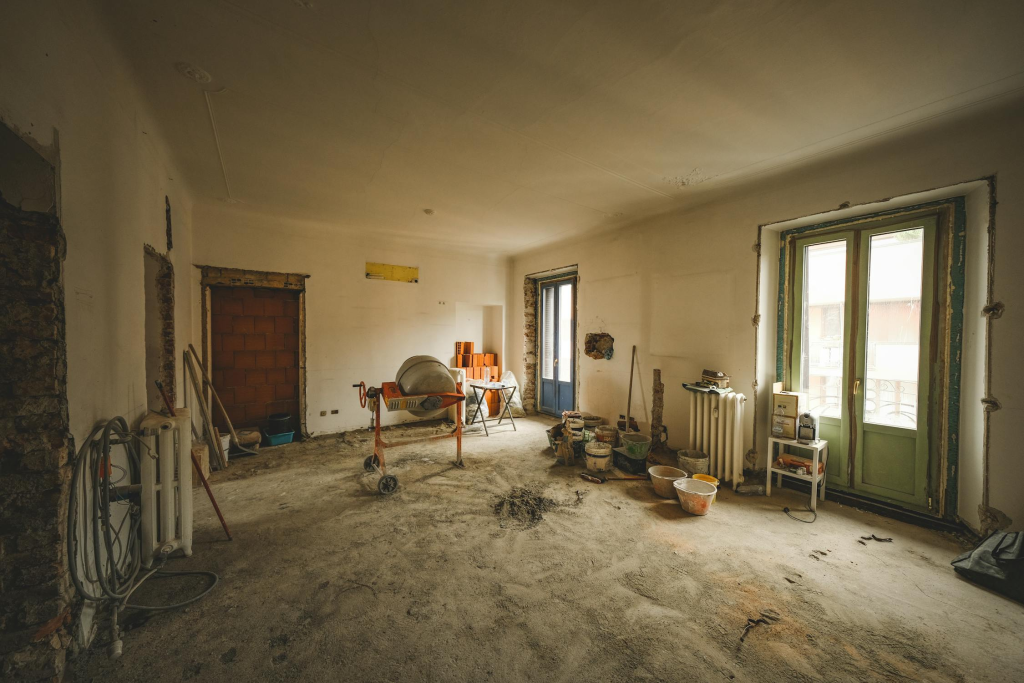
In this post, we will outline the key signs that indicate you should consider extending your home and how it can improve your living space.
1. Your Home Feels Too Small
Overcrowded Living Spaces
If your family is struggling to move around freely due to lack of space, an extension may be necessary. Signs of an overcrowded home include:
- Limited seating areas – If there are not enough places for everyone to sit comfortably, expanding the living or dining area can help.
- Narrow hallways or doorways – Tight spaces can make moving around difficult, particularly in high-traffic areas.
- Feeling restricted – If everyday activities like cooking or relaxing feel cramped, extra space can make a big difference.
Insufficient Storage
A lack of storage can lead to a cluttered and disorganised home. Signs that you need more storage include:
- Overflowing cupboards and wardrobes – If your current storage is at full capacity, it may be time to expand.
- Items stored in inconvenient places – If belongings are piled in the garage or hallways, more space is needed.
- Difficulty keeping the home tidy – A well-designed extension can provide built-in storage solutions, keeping your home neat and functional.
2. Your Family Is Growing
More Bedrooms Are Needed
As families grow, so do their space requirements. You may need an extension if:
- Children share bedrooms but need their own space. A new bedroom can give them privacy.
- A new baby is on the way – More space will make the transition smoother.
- Older family members are moving in – A guest room or granny flat can provide comfortable living arrangements.
Bathrooms Are Always In Use
Busy households often struggle with limited bathrooms. Signs that you need another bathroom include:
- Waiting in line every morning – If there are constant delays getting ready, an extra bathroom can reduce stress.
- Sharing bathrooms with guests – If your main bathroom is being used by visitors, adding a guest bathroom can improve convenience.
- Space feels too small – If your current bathroom is overcrowded with toiletries and towels, an extension can provide a better layout.
3. You Work From Home And Need A Dedicated Space
Lack Of A Quiet Workspace
Remote work is becoming more common, but working from a shared area can be distracting. If you struggle with:
- Noise from family members – A home office extension provides a quiet, separate space.
- No room for office furniture – If your desk, chair, and storage are taking over your living space, a dedicated area is needed.
- Difficulty focusing – A well-designed workspace can improve productivity and work-life balance.
Blurring The Line Between Work And Home
If your home and work life feel too connected, an office extension can help by:
- Creating a physical separation between work and leisure
- Allowing for better organisation of work materials
- Providing a professional setting for virtual meetings
4. Your Home Layout Feels Outdated Or Impractical
Inefficient Floor Plan
Older homes may not be designed for modern lifestyles. An extension can help if:
- Rooms feel disconnected – Open-plan layouts can create a better flow between spaces.
- The kitchen is too small – Expanding your kitchen can make cooking and entertaining easier.
- Living areas do not accommodate gatherings – A larger living space can improve comfort for social events.
Lack Of Natural Light
Dark and enclosed spaces can make your home feel uninviting. Signs you need more light include:
- Reliance on artificial lighting during the day
- Few windows or blocked views
- A dull and closed-off feel
A well-planned extension with skylights or larger windows can brighten your home and make it more welcoming.
5. You Want To Increase Property Value
Attracting Future Buyers
A home extension is a long-term investment. If you plan to sell in the future, adding more space can:
- Make the property more attractive to buyers – Larger homes are in higher demand.
- Increase market value – Well-designed extensions can significantly boost property prices.
- Improve functionality – Buyers look for homes that cater to modern living needs.
Enhancing Street Appeal
A home extension can also improve the exterior appearance by:
- Adding a stylish, modern touch
- Creating a more symmetrical or balanced design
- Incorporating materials that enhance the existing structure
6. Your Outdoor Space Is Not Being Used Efficiently
Expanding Into The Backyard
If you have a large, underutilised backyard, extending your home into this space can be a practical solution. Benefits include:
- Maximising available land – Use the space for extra rooms instead of letting it go unused.
- Creating a seamless indoor-outdoor connection – Bi-fold doors can open up the space to natural surroundings.
- Adding value to your property – More living space makes a home more desirable.
Need For A Specialised Room
If you want a space dedicated to a hobby or lifestyle need, an extension can accommodate:
- A home gym – Save money on memberships with a personal workout area.
- An art or music studio – Create an inspiring and distraction-free environment.
- A playroom for children – Keep toys and activities contained in one space.
7. Your Home Lacks Modern Features
Upgrading To Energy-Efficient Solutions
An extension allows for modern energy-saving improvements, such as:
- Better insulation to reduce heating and cooling costs
- Double-glazed windows to improve comfort
- Solar panels for sustainable energy use
Improving Ventilation And Comfort
Older homes often suffer from poor airflow and temperature regulation. An extension can:
- Improve cross-ventilation with well-placed windows
- Reduce dampness and mould issues
- Make living spaces more comfortable year-round
8. You Need More Entertainment Space
Hosting Guests Feels Difficult
If you love entertaining but struggle with space, an extension can provide:
- A larger dining area for dinner parties
- An open-plan kitchen for social cooking
- A media or theatre room for movie nights
Outdoor Entertaining Area
An extension can also enhance your outdoor living experience by:
- Creating a covered alfresco dining area
- Adding an outdoor kitchen or BBQ space
- Improving access to your backyard with sliding or folding doors
Conclusion
If your home no longer meets your needs, an extension can be the ideal solution. Whether you require more bedrooms, better functionality, or increased property value, extending your home can improve comfort and convenience.
Consider your budget, long-term goals, and the available space before starting the process. Consulting professionals will help ensure that your extension enhances both your lifestyle and home value.
Frequently Asked Questions
How Do I Know If My Home Can Be Extended?
Most homes can be extended, but factors such as land size, council regulations, and structural integrity need to be considered. A professional builder or architect can assess your property and advise on the best options.
Is It Cheaper To Extend Or Move To A Bigger Home?
Extending can be more cost-effective than buying a new home, especially when considering stamp duty, real estate fees, and moving expenses. However, costs vary depending on the complexity of the extension and your location.
Do I Need Planning Permission For A Home Extension?
In many cases, yes. Extensions that change the structure of your home or exceed specific size limits typically require council approval. Consult your local council before starting your project to ensure you meet all legal requirements.
How To Choose Your Luxury Home Builder: A Comprehensive Guide
Building your dream home is one of the most significant investments you will ever make, especially when it comes to a luxury home. A luxury home is not just about size; it’s about craftsmanship, attention to detail, and creating a space that reflects your personality, tastes, and lifestyle.

The journey begins with choosing the right luxury home builder who can bring your vision to life. Selecting the right builder is essential for ensuring that your dream home is built to the highest standards, within budget, and on time.
In this guide, we will explore how to choose the right luxury home builder, covering everything from understanding your needs to evaluating a builder’s reputation and expertise. Whether you’re building in Melbourne, Sydney, Brisbane, or beyond, this guide will help you make informed decisions throughout the process.
Click See It Here For More Details
A Comprehensive Guide Guide When Choosing A Luxury Home Builder
Define Your Vision And Needs
Before you start looking for a luxury home builder, it’s crucial to have a clear vision of what you want in your home. This includes your design preferences, desired features, and the overall feel you wish to achieve. Consider the following aspects:
- Design Style: Do you prefer a contemporary, modern, or classic design? The style of the home will determine the materials, finishes, and overall architecture.
- Size and Layout: How many bedrooms and bathrooms do you need? What kind of living spaces will suit your family’s lifestyle? Do you want additional features such as a home gym, cinema room, or a pool?
- Location: The location of your luxury home will influence the design, materials, and construction process. Ensure the builder has experience with your area’s specific requirements, including zoning laws and weather considerations.
- Budget: Luxury homes can range from modest luxury to grand estates. Determine your budget and have a clear understanding of how much you’re willing to spend. Factor in the cost of land, permits, and any upgrades or custom features you may desire.
Once you have defined your vision and needs, it will be easier to communicate with potential builders and assess whether they can meet your expectations.
Research Builders With Experience In Luxury Homes
Not all builders specialise in luxury homes. When selecting a builder for a luxury home, experience and a portfolio of previous high-end projects are critical. Here’s how to conduct thorough research:
- Specialisation: Look for builders who have experience with luxury homes, as these types of projects require a high level of expertise in design, construction, and attention to detail. A builder with a track record in luxury homes will understand the specific demands of custom design and high-end finishes.
- Portfolio: Ask for a portfolio of previous projects. A well-established luxury home builder will have a gallery of completed homes that reflect their craftsmanship and design versatility. This portfolio will give you an insight into their ability to create homes that match your vision and specifications.
- Word of Mouth: Talk to friends, family, or colleagues who have built luxury homes in your area. Personal recommendations are often one of the best ways to find a trustworthy builder. You can also check online reviews and testimonials to see what previous clients have to say about their experience.
Evaluate Reputation And Track Record
A luxury home is a long-term investment, and you want to ensure that your builder has a solid reputation and a track record of delivering quality homes. Look for the following:
- Reputation in the Industry: Research the builder’s reputation in the local luxury home market. Do they have a history of satisfied clients? Are they known for delivering on promises and exceeding expectations? A reputable builder will have an established presence in the luxury home sector.
- Accreditations and Certifications: Check whether the builder holds relevant accreditations or memberships in industry associations such as the Master Builders Association (MBA) or the Housing Industry Association (HIA). These memberships indicate a commitment to quality standards and ethical business practices.
- Awards and Recognition: Builders who consistently produce high-quality luxury homes may have received industry awards or recognition. Ask the builder about any accolades or awards they have earned for their work. Winning design and construction awards can indicate a high level of expertise.
Ensure Quality And Craftsmanship
Luxury homes are all about the finer details, and the quality of materials, finishes, and workmanship is paramount. Here’s how to ensure you’re working with a builder who delivers excellence:
- Material Selection: Ask the builder about the types of materials they typically use for luxury homes. Ensure that the builder sources high-quality, durable materials that match your expectations for a premium home.
- Attention to Detail: Luxury homes require impeccable craftsmanship. Ask potential builders about their process for ensuring quality, including how they oversee the construction process and perform quality control checks. You want a builder who pays attention to every detail, from the foundation to the finishing touches.
- Customisation: If you have specific preferences, such as custom cabinetry, unique finishes, or bespoke architectural features, ensure the builder can accommodate these requests. A good luxury home builder will be flexible and willing to work with you to create a home that matches your vision.
Assess Communication And Compatibility
Building a luxury home is a complex process that requires effective communication between you and the builder. You need a builder who is transparent, easy to work with, and responsive to your needs. During the selection process, pay attention to the following:
- Communication Style: How does the builder communicate with you? Are they clear and responsive in their interactions? A good builder will keep you informed throughout the process and address any questions or concerns promptly.
- Understanding of Your Needs: Ensure that the builder listens to your ideas and is open to collaboration. They should be able to provide guidance and offer solutions that align with your vision while remaining practical and within budget.
- Professionalism and Integrity: Look for a builder who operates with integrity and professionalism. They should respect your time, maintain a high standard of service, and be honest about what’s possible within your budget and timeframe.
Review Contracts And Warranty
Before you sign a contract with any builder, ensure that the terms are clear and fair. A detailed contract protects both you and the builder and should outline all expectations, timelines, and financial details. Here are some key aspects to review:
- Clear Terms and Conditions: The contract should outline the scope of work, timelines, payment schedules, and any additional costs. It should also specify who is responsible for obtaining permits, inspections, and handling unforeseen issues that may arise during construction.
- Warranty: A luxury home is a long-term investment, so ensure the builder offers a comprehensive warranty on their work. A warranty should cover construction defects and workmanship issues that may arise after the home is completed.
- Dispute Resolution: The contract should include a process for resolving any disputes that may arise during the construction process. This will give you peace of mind, knowing that there’s a clear path forward if anything goes wrong.
Budget And Financial Stability
Luxury homes can be expensive, so it’s essential to choose a builder who is financially stable and can manage your project without risking delays or budget overruns. When assessing a builder’s financial situation, consider the following:
- Budget Management: A good builder will work with you to create a realistic budget that includes all aspects of the project, including materials, labour, and contingencies for unexpected costs. Be cautious if a builder offers a price that seems too good to be true, as this could indicate potential hidden costs down the line.
- Financial Stability: Ensure that the builder has the financial stability to complete the project without running into cash flow problems. This can be particularly important for larger or more complex luxury home builds.
- Payment Schedule: Understand the payment structure and make sure it aligns with the completion stages of the project. Typically, payments are made in instalments as the project progresses, with a final payment due upon completion.
Schedule Site Visits And Interviews
Once you’ve shortlisted potential luxury home builders, schedule site visits and interviews to assess their suitability. Visiting past projects gives you a firsthand look at the quality of their work. You can also speak directly with the builder to ask about their process, timeline, and any concerns you might have. Be sure to ask the following questions during your interview:
- How long have you been building luxury homes?
- Can you provide references from past clients?
- How do you ensure quality control throughout the build?
- What is your process for handling delays or changes to the project?
- How do you manage project costs and timelines?
Conclusion
Choosing the right luxury home builder is a critical decision that will shape the outcome of your dream home. By carefully considering factors such as experience, reputation, craftsmanship, communication, and budget management, you can select a builder who will bring your vision to life with excellence and attention to detail.
Remember, building a luxury home is a partnership, and finding the right builder who understands your needs and can deliver the quality you expect is key to creating a home that exceeds your expectations.
Frequently Ask Question
How Do I Ensure Quality Construction In My Luxury Home?
Ensuring quality construction begins with hiring a reputable builder with a proven track record of delivering luxury homes to the highest standard. Ensure the builder uses top-quality materials and trusted suppliers. During the build, regular site inspections are necessary to ensure the construction is proceeding according to plan and meets all relevant standards. It’s advisable to hire an independent building inspector or project manager to monitor progress. Communication with the builder throughout the project will help address any concerns early on.
How Can I Be Sure The Builder Will Stay Within Budget?
Clear communication and detailed contracts are essential for staying within budget. Before construction begins, request a detailed quote that outlines every aspect of the build, including materials, labour, and contingencies. Make sure you’re on the same page with the builder about any additional costs or changes. Regular progress updates and inspections help ensure the project remains on track. A trustworthy builder will notify you of any changes that could impact the budget and discuss alternatives to keep costs under control.
What Happens If There Are Disputes During The Construction Of My Luxury Home?
Disputes during construction are not uncommon, but they can be avoided or resolved with proper planning and clear contracts. Ensure your contract specifies how disputes will be handled, including timelines for resolving issues and the use of an independent mediator if necessary. A good builder should be open to addressing concerns promptly and professionally. If issues arise, keep communication lines open and document all concerns in writing. In the worst case, you can seek legal advice or involve relevant building authorities to resolve significant disputes.
What Does A Building Defect Inspection Involve
A building defect inspection is a vital process for identifying issues that could affect the structural integrity, safety, and overall value of a building. It is crucial for property owners, potential buyers, and investors to have a comprehensive understanding of what a building defect inspection involves.
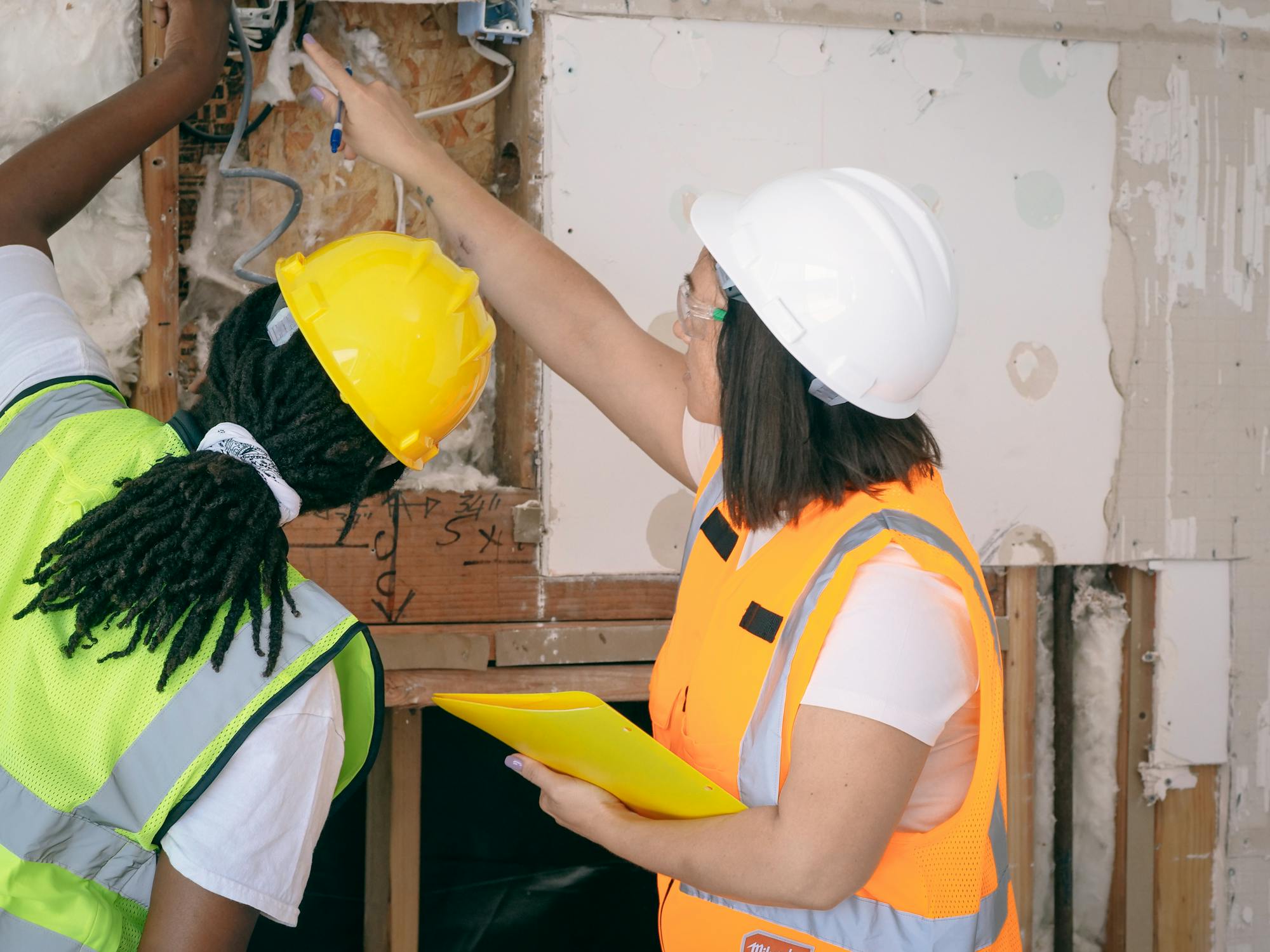
In Australia, building defect inspections are typically conducted by qualified professionals who are experts in building construction and maintenance. These inspectors are often trained to identify both visible and hidden defects that could pose risks or lead to expensive repairs if left unchecked.
Click Read Here For More Details
Purpose Of A Building Defect Inspection
The primary purpose of a building defect inspection is to assess the condition of a building and identify any structural or non-structural issues that may need attention. The inspection can be performed on both new and existing buildings.
For new buildings, the inspection may be conducted to ensure that the construction is up to standard and adheres to local building codes. For older buildings, the purpose of the inspection is to identify signs of wear and tear, deterioration, or potential hazards that could impact the safety and functionality of the structure.
A building defect inspection serves several key purposes:
- Ensure Safety: Detecting potential safety hazards such as structural failures or risks of collapse.
- Identify Maintenance Needs: Identify areas that require repairs or ongoing maintenance to avoid future problems.
- Protect Property Value: Preventing the depreciation of the building’s value by addressing defects early on.
- Comply with Regulations: Ensuring that the building complies with Australian building codes and regulations.
Types Of Building Defects
There are various types of building defects that a professional inspector will assess during an inspection. These defects can generally be classified into two categories: structural and non-structural.
Structural Defects
Structural defects are those that impact the core integrity of the building. These defects are particularly serious as they can compromise the safety and stability of the entire structure. Examples of structural defects include:
- Cracks in the Foundation: Cracks or movement in the foundation can indicate underlying issues with the soil or the foundation’s construction. This could lead to subsidence, which is the sinking or shifting of the building.
- Roof Damage: Roof defects such as sagging, leaks, or insufficiently sealed joints can lead to water damage and other structural problems.
- Water Penetration: Water ingress due to defects in walls, windows, or roof flashing can weaken a building’s structure over time, leading to rot or corrosion of structural materials like steel and timber.
- Defective Load-Bearing Walls: These walls are essential for supporting the weight of the building. Any damage or movement in these walls can cause significant structural problems.
Non-Structural Defects
Non-structural defects typically affect the aesthetic and functional quality of a building rather than its safety. While not immediately dangerous, these issues can still lead to costly repairs if left unaddressed. Examples of non-structural defects include:
- Cracks in Walls and Ceilings: Cracks in plaster or paint can be a sign of movement in the building or simply the result of natural settling. However, large or widening cracks can indicate more serious issues.
- Damp and Mould: Areas of high humidity or poor ventilation can cause mould to grow on walls, ceilings, and floors. This can lead to health problems and further damage to building materials.
- Faulty Plumbing: Leaking pipes, blockages, and water damage can lead to costly repairs and significant damage to the building’s structure if left unaddressed.
- Substandard Finishes: Issues such as poorly applied paint, uneven floor surfaces, or inadequate insulation can detract from the building’s appearance and function.
The Building Defect Inspection Process
A building defect inspection involves a thorough visual assessment of the property to identify both visible and hidden defects. It is typically conducted by a licensed building inspector who has experience in construction and defect identification. Here’s a breakdown of what the inspection process involves:
Initial Consultation
Before the inspection begins, the building inspector will usually discuss the scope of the inspection with the property owner or potential buyer. The inspector may ask for details such as the age of the building, any previous repairs or maintenance, and any areas of concern that the owner or buyer has noticed. This information can help the inspector tailor the inspection to focus on areas that may require more attention.
Visual Inspection
The core of a building defect inspection is a visual assessment of the property. The inspector will examine the building both inside and outside, inspecting structural elements such as the foundation, walls, roof, floors, windows, doors, and ceilings. During the visual inspection, the inspector will look for:
- Signs of Movement or Cracking: This may indicate the settling of the foundation or structural problems.
- Water Damage or Staining: Leaks, water stains, and signs of dampness can indicate issues with plumbing, roofing, or drainage systems.
- Signs of Mould or Mildew: These can indicate inadequate ventilation or moisture problems.
- Defective Joinery or Fixtures: Faulty windows, doors, and cabinets can impact the functionality and aesthetics of the property.
Detailed Assessment Of Key Areas
In addition to the general visual inspection, the inspector will conduct a more detailed assessment of the following areas:
- Roof and Roof Space: The inspector will examine the roof for any visible defects, such as cracked tiles, rusted gutters, or damaged flashing. If accessible, the roof space (attic) will be inspected for signs of leaks, mould, or pest infestations.
- Foundation and Subfloor: The foundation is a critical part of the building’s structure. The inspector will check for cracks, subsidence, or movement. They will also examine the subfloor (if accessible) for any signs of water damage or pests.
- Plumbing and Electrical Systems: While a building inspector is not typically a licensed plumber or electrician, they will examine the general condition of these systems. For example, they will check for signs of leaking pipes, faulty wiring, or electrical safety hazards.
- External Elements: The inspector will look at the external walls, including cladding, windows, and doors, to check for damage or signs of water ingress.
Reporting Findings
After the inspection is complete, the inspector will compile a detailed report that outlines all the findings. The report will typically include:
- Photographs of Defects: Visual evidence of defects to provide clarity and context.
- Description of Defects: A thorough description of the identified issues, including their severity and possible causes.
- Recommendations for Repairs or Further Investigation: The report will provide recommendations for addressing defects, such as repairs, maintenance, or consultation with specialists (e.g., structural engineers or plumbers).
- Estimated Costs: In some cases, the inspector may include rough estimates for repair costs, though more detailed estimates will require consultation with tradespeople.
Why A Building Defect Inspection Is Important In Australia
Building defect inspections are particularly important in Australia due to the country’s diverse climate, varying construction standards, and stringent building codes. Australia experiences a wide range of environmental conditions, including intense heat, humidity, and coastal salt air, all of which can contribute to specific building defects. Additionally, Australian construction standards are among the strictest in the world, and compliance with these regulations is critical for both safety and legal reasons.
A building defect inspection helps ensure that properties meet these high standards and do not pose any immediate or long-term risks to their occupants or owners. This is particularly important for people purchasing properties, as it helps them avoid hidden defects that could lead to significant financial burdens.
Who Needs A Building Defect Inspection?
A building defect inspection is useful for a variety of parties:
- Homebuyers and Investors: It provides peace of mind by identifying hidden defects before committing to a property.
- Property Owners: Helps owners maintain the value and safety of their property by catching potential issues early.
- Builders and Developers: Inspections ensure that buildings are constructed to code and meet quality standards.
- Insurance Companies: An inspection report can help assess the risk and determine the appropriate insurance coverage for a property.
Conclusion
A building defect inspection is a crucial process in maintaining the safety, value, and longevity of a property. Whether for a new build or an older home, the identification of defects helps prevent costly repairs down the track and ensures compliance with Australian building standards.
By hiring a qualified and experienced inspector, property owners and buyers can gain a thorough understanding of the property’s condition, enabling them to make informed decisions.
Frequently Ask Question
How Do I Choose A Qualified Building Inspector?
To choose a qualified building inspector, ensure they are licensed and registered with the relevant authorities in your state or territory. Look for inspectors who have experience and certifications, such as a membership with a professional body like the Master Builders Association or the Housing Industry Association. Checking reviews and asking for recommendations from previous clients can also be helpful. Make sure they are insured and have a good reputation for thorough and reliable inspections. It’s a good idea to ask for a sample report to assess the quality of their work.
What Should I Expect In A Building Defect Inspection Report?
A building defect inspection report will typically include an overview of the property’s condition, listing any defects found in both the structural and non-structural components. The report will detail the severity of each issue, categorised as minor, moderate, or major. It will also provide recommendations for repairs, maintenance, or further investigations if needed. Photographs of defects may be included to help explain the issues more clearly. The report should be written in plain language and be easy for homeowners or potential buyers to understand.
Can A Building Defect Inspection Detect Termites Or Pests?
A building defect inspection generally includes a visual check for signs of termite or pest activity, such as holes in wood, mud tunnels, or droppings. However, it may not provide a comprehensive pest inspection. If termites or pests are suspected, you may need to engage a pest inspector for a more in-depth assessment. Some building inspectors offer combined building and pest inspections. It’s important to address pest issues quickly, as they can cause significant damage to the structure of the property if left untreated.
Can You Use Plywood For Garage Walls?
When planning a garage renovation or building from scratch, choosing the right materials for the walls is crucial. Plywood, a versatile and cost-effective material, often comes into consideration. Its ease of use and affordability make it an appealing choice for many homeowners looking to enhance or upgrade their garage spaces.

But before committing to plywood for your garage walls, it’s important to understand its benefits, potential drawbacks, and alternative options. This article explores whether plywood is a suitable choice for garage walls, compares it with other materials, and provides guidance on the best practices for installation.
Can You Use Plywood For Garage Walls?
Plywood As A Wall Material
- Plywood is made from layers of thin wood veneers glued together. It’s known for its durability and strength, which makes it a popular choice for various construction and renovation projects. For garage walls, plywood offers several advantages:
- Cost-Effectiveness: Compared to other wall materials like drywall or insulation boards, plywood is relatively inexpensive. This can be especially beneficial if you’re on a tight budget or working on a DIY project.
- Ease of Installation: Plywood is relatively easy to cut and install. It can be nailed or screwed directly to wall studs, making it a good choice for DIY enthusiasts.
- Durability: Plywood is resilient and can withstand impacts better than drywall, making it a good option for garages where tools and equipment might occasionally bump against the walls.
- Customizability: Plywood can be easily painted or stained to match the desired aesthetic of your garage. Additionally, it can be used as a base layer for other finishes.
Drawbacks Of Using Plywood
However, plywood is not without its disadvantages:
- Moisture Sensitivity: Plywood is susceptible to moisture and can warp or swell if exposed to high humidity or direct water. Garages, especially those with poor ventilation or frequent water exposure, might not be ideal environments for plywood walls unless properly treated.
- Insulation: While plywood provides some level of insulation, it is not as effective as dedicated insulation materials. If thermal insulation is a concern, you might need to add extra layers or use insulated plywood.
- Maintenance: Plywood surfaces can become scratched or dented over time. Regular maintenance, including sanding and refinishing, may be required to keep it looking good.
- Aesthetic Limitations: Although plywood can be finished with paint or stain, it may not provide the polished look that some homeowners desire. For a more refined appearance, additional treatments may be necessary.
Uses Of Garage Walls
Garage walls offer a multitude of functional and creative possibilities, transforming an often overlooked space into a practical area tailored to your needs. For efficient storage, walls can be equipped with shelving units, pegboards, and hooks to organize tools, sports gear, and household items. In a workshop setting, a dedicated wall-mounted workbench or tool wall enhances productivity and accessibility.
If you’re looking to repurpose your garage, installing mirrors can convert the space into a home gym, while decorative shelving and photo displays can add a personal touch. Additionally, garage walls can be insulated to improve temperature control and fitted with ventilation systems to ensure a comfortable environment. For those considering a more significant change, garage walls can be revamped to create a home office or a cozy living area, making the space not only functional but also an extension of your home’s aesthetic.
Garage walls can also serve as a foundation for enhancing the safety and security of your home. Mounting a fire extinguisher ensures you have quick access to safety equipment in case of emergencies. Adding security features like cameras or motion sensors can provide an extra layer of protection for your property. Beyond practical uses, garage walls can become a canvas for personal expression; consider painting murals or applying wallpaper to create a visually engaging environment.
In a more functional approach, walls can be fitted with insulation panels to improve energy efficiency and comfort, or equipped with ventilation systems to maintain air quality. By thoughtfully utilizing garage walls, you can transform an underused space into a valuable and versatile area that aligns with your lifestyle and preferences.
Best Practices For Using Plywood On Garage Walls
If you decide that plywood garage walls are the right choice, here are some best practices to ensure a successful installation:
- Preparation: Ensure that the garage walls are clean, dry, and free of any debris before installing plywood. Any existing wall coverings or materials should be removed to create a smooth surface.
- Moisture Protection: To prevent moisture-related issues, consider using treated plywood or applying a moisture-resistant sealant. Additionally, ensure proper ventilation in your garage to minimize humidity.
- Proper Installation: Use appropriate fasteners, such as screws or nails, to secure the plywood to the wall studs. Ensure that the plywood sheets are aligned properly and that there are no gaps between them.
- Finishing Touches: After installation, sand the plywood surfaces to smooth out any rough edges. Apply a primer before painting or staining to achieve a consistent finish.
Alternatives To Plywood For Garage Walls
While plywood can be a viable option for garage walls, it’s worth considering other materials based on your specific needs and preferences.
Drywall
- Drywall is a common wall material known for its smooth finish and ease of installation. It’s less durable than plywood but provides a more polished look. Drywall also offers better insulation properties, making it suitable for climate control. However, it’s more prone to damage from impacts and requires more maintenance.
OSB (Oriented Strand Board)
- OSB is another engineered wood product similar to plywood but made from compressed wood strands. It’s generally less expensive than plywood and offers comparable durability. OSB can be a good alternative if you’re looking for a cost-effective solution. However, like plywood, it can be affected by moisture.
Insulated Panels
- For garages that require better insulation, insulated panels can be an excellent choice. These panels combine a rigid insulation core with a protective outer layer, providing superior thermal insulation and energy efficiency. They are more expensive but can significantly improve the comfort of your garage space.
Metal Panels
- Metal panels, such as corrugated steel, offer a highly durable and low-maintenance option. They are resistant to moisture and pests, making them suitable for various environmental conditions. However, they may not provide the same level of insulation as other materials and might require additional treatment to prevent rust.
Concrete or Cinder Block
- For a more permanent and robust solution, concrete or cinder block walls can be considered. They offer excellent durability and are resistant to moisture and pests. However, these materials are more challenging to install and may require professional assistance.
Conclusion
Plywood can be a practical and cost-effective choice for garage walls, particularly if you’re looking for a material that is easy to install and modify. Its benefits include affordability, ease of use, and durability. However, its susceptibility to moisture and maintenance requirements should be carefully considered.
When deciding on the best material for your garage walls, weigh the pros and cons of plywood against other options such as drywall, OSB, insulated panels, metal panels, and concrete. Each material has its unique advantages and potential drawbacks, so choosing the right one will depend on your specific needs, budget, and preferences.
By carefully evaluating your options and following best practices for installation and maintenance, you can create a garage space that is both functional and aesthetically pleasing. Whether you choose plywood or another material, ensuring that your walls are properly installed and maintained will contribute to the long-term success of your garage renovation project.
How To Make Garage Walls Look Better?
The garage is often an overlooked space in the home, relegated to storage and clutter. However, with a little creativity and effort, it can become a functional and stylish part of your home. Whether you’re looking to spruce up your garage for personal enjoyment or to increase the value of your property, focusing on improving the appearance of your garage walls is a great place to start.

This article will guide you through practical and budget-friendly ways to enhance the look of your garage walls, suggest additional improvements, and offer tips for maintaining a polished appearance.
How To Make Garage Walls Look Better?
Painting The Walls
Painting is one of the simplest and most cost-effective ways to refresh your garage walls. Choose a high-quality, durable paint that can withstand the conditions of a garage environment. Consider using a semi-gloss or satin finish, as these are more resistant to stains and easier to clean.
Steps to Paint Your Garage Walls:
- Preparation: Start by clearing out the garage and covering any surfaces you don’t want to paint. Clean the walls to remove dust and grime. If there are any cracks or holes, fill them with spackle or joint compound and sand them smooth.
- Priming: Apply a coat of primer to ensure that the paint adheres well and to cover any stains or marks on the walls. A primer also helps in achieving an even finish.
- Painting: Once the primer is dry, apply your chosen paint with a roller or brush. For a more professional finish, use painter’s tape to protect edges and create clean lines.
- Finishing Touches: Allow the paint to dry completely before removing the tape and cleaning up.
Adding Wall Panels Or Wainscoting
For a more textured and sophisticated look, consider installing wall panels or wainscoting. This can add depth and character to your garage walls.
Types Of Panels
- Wood Panels: Classic and versatile, wood panels can be stained or painted. They add warmth and can be installed in various styles, from traditional beadboard to modern shiplap.
- PVC Panels: These are durable and resistant to moisture, making them a practical choice for garages. They come in a variety of finishes and are relatively easy to install.
- Metal Panels: For a sleek, industrial look, metal panels can be a great choice. They are also easy to maintain and clean.
Installation Tips
- Measure and Plan: Measure your walls and plan the layout of the panels. Ensure you have all the necessary tools and materials before you start.
- Cut and Install: Cut the panels to size and install them according to the manufacturer’s instructions. Use adhesive or nails as required.
- Finishing: Paint or stain the panels as desired and allow them to dry before adding any additional elements.
Creating A Feature Wall
A feature wall can be a focal point in your garage, adding visual interest and style. Here are a few ideas for creating a standout wall:
- Accent Colours: Choose a bold or contrasting colour for one wall to create a striking visual impact. This works particularly well if the other walls are painted in neutral tones.
- Murals or Decals: For a personalized touch, consider painting a mural or applying vinyl decals. This can be especially fun if you use the garage for hobbies or as a workshop.
- Shelving and Storage Solutions: Install shelves or pegboards on one wall to create a functional and organized space. This not only improves the look of the wall but also helps keep your garage clutter-free.
What Is A Garage?
A garage is a covered structure designed primarily for the storage of vehicles, such as cars, motorcycles, or bicycles. It can be attached to or detached from a house and typically features doors that can be opened manually or with an automatic opener. Beyond vehicle storage, garages are often used as functional spaces for various purposes, including workshops, storage areas for tools and equipment, or even as additional living spaces.
They protect vehicles from weather conditions and contribute to the organization of a home by offering space to keep items out of sight. Garages can vary in size and design, from small, single-car units to larger structures that accommodate multiple vehicles and additional storage or workspace.
Additional Enhancements For Your Garage
Once you’ve tackled the walls, consider these additional improvements to further enhance the
appearance and functionality of your garage:
Lighting
Good lighting can transform the look of any space. In the garage, it’s essential for both functionality and aesthetics.
- Overhead Lighting: Bright, even lighting is crucial. Consider LED fixtures or fluorescent lights for a well-lit workspace.
- Task Lighting: Add focused lighting over work areas or tool benches to improve visibility.
- Accent Lighting: Install LED strips or decorative lights to highlight architectural features or create ambience.
Flooring Solutions
The floor is another important aspect of your garage that can complement the walls. Options like epoxy coatings, vinyl tiles, or rubber mats can provide durability and style.
- Epoxy Coatings: These are durable and resistant to stains, making them a popular choice for garages. They can be customized with different colours and finishes.
- Vinyl Tiles: Easy to install and clean, vinyl tiles offer a wide range of styles and colours.
- Rubber Mats: These are excellent for protecting the floor and providing a cushioned surface, ideal for areas with heavy foot traffic or frequent use.
Storage Solutions
Effective storage can greatly improve the look of your garage by reducing clutter. Here are some storage Ideas:
- Cabinets: Install cabinets to store tools and equipment neatly. Opt for sturdy, weather-resistant materials.
- Shelves: Adjustable shelving can help organize items and make the space more functional.
- Hooks and Hangers: Use wall-mounted hooks and hangers to keep frequently used tools and equipment within easy reach.
Conclusion
Transforming your garage into a space that’s both functional and visually appealing can significantly enhance your home’s overall value and functionality. By focusing on the aesthetics of your garage walls, you lay the foundation for a more inviting and organized environment. Painting, adding wall panels, or creating a feature wall are effective ways to refresh the look of your garage, making it more than just a storage area.
Incorporating additional improvements such as enhanced lighting, durable flooring, and clever storage solutions can further elevate the space. Good lighting not only improves visibility but also sets the mood, while flooring options like epoxy coatings or vinyl tiles offer both durability and style. Smart storage solutions help keep your garage clutter-free, making it a more practical and enjoyable space to use.
The benefits of investing time and effort into your garage are manifold. A well-maintained garage not only enhances the visual appeal of your home but also adds to its functionality, whether you’re using it as a workshop, storage space, or a personal retreat. Improved aesthetics and organization can make your garage a more pleasant place to spend time, increase its value, and provide a sense of satisfaction and pride in your home.
Ultimately, a garage makeover is more than just a cosmetic upgrade; it’s an opportunity to create a space that better serves your needs and reflects your style. With the right approach and attention to detail, you can transform your garage into a space that adds real value to your home and enhances your everyday life. So, take the plunge and start your garage transformation today—your home, and your future self, will thank you for it.
Click this guide “how to remove emulsion paint from walls” to know more!
How To Choose A Builder In Melbourne?
Choosing a builder for your construction or renovation project in Melbourne is a critical decision that can significantly influence the outcome of your project. Whether you are planning to build a new home, remodel an existing one, or undertake a commercial construction project, the right builder will ensure that the work is done efficiently, within budget, and to the highest standards.

With a plethora of builders in Melbourne, each with varying levels of expertise, reputation, and cost, it can be daunting to find the right one for your needs. This guide will walk you through the essential steps to help you make an informed decision and select the best builder in Melbourne.
How To Choose A Builder In Melbourne?
Before you begin your search for a builder, it is essential to have a clear understanding of your project needs. Different builders specialize in different types of projects. Some may focus on residential constructions, while others might specialize in commercial buildings or renovations. Here are some key considerations to help you define your project requirements:
Scope of Work
- Identify the scale and scope of your project. Are you building a new home, extending an existing one, or renovating a specific part of your property? The complexity and size of the project will determine the type of builder you need. Large-scale projects may require a builder with more experience and resources, while smaller projects might be adequately handled by a smaller firm.
Budget
- Determine your budget for the project. Having a clear budget will help you narrow down your choices and find a builder who can deliver quality work within your financial constraints. Be sure to include a buffer for unexpected expenses that may arise during the construction process.
Timeline
- Establish a timeline for the completion of your project. Whether you have a flexible timeline or need the project completed by a specific date, it’s important to communicate this with potential builders. Some builders may have a waiting list or other projects in progress, which could impact their availability to start your project.
Style and Design Preferences
- Consider the architectural style and design elements you want for your project. Some builders may specialize in modern designs, while others excel in traditional or custom builds. Knowing your preferences can help you choose a builder who has experience in delivering the style you desire.
Research Potential Builders
Once you have a clear understanding of your project needs, the next step is to research potential builders in Melbourne. This process involves gathering information about different builders to evaluate their suitability for your project.
Seek Recommendations
- Start by seeking recommendations from friends, family, and colleagues who have had positive experiences with builders in Melbourne. Personal referrals are invaluable as they come from trusted sources who can provide firsthand insights into the builder’s work quality, reliability, and professionalism.
Online Reviews and Ratings
- In addition to personal recommendations, look for online reviews and ratings on platforms such as Google, Yelp, and Houzz. These reviews can provide a broader perspective on the builder’s reputation and track record. Pay attention to recurring themes in the feedback, both positive and negative, to get a sense of the builder’s strengths and weaknesses.
Check Credentials and Licenses
- Ensure that the builders you are considering are licensed and insured to operate in Melbourne. Licensing requirements vary by state, so it is crucial to verify that the builder holds the appropriate licenses for the type of work they will be performing. Additionally, ask for proof of insurance to protect yourself from liability in case of accidents or damage during the construction process.
Review Portfolios
- A builder’s portfolio is a showcase of their previous work and can provide valuable insights into their expertise and craftsmanship. Review portfolios of completed projects that are similar in style and scope to yours. This will give you a better idea of the builder’s capabilities and whether their work aligns with your expectations.
Interview Multiple Builders
- Interviewing multiple builders is a crucial step in the selection process. Prepare a list of questions to ask during the interview to gauge the builder’s experience, approach to project management, communication style, and problem-solving skills. Some important questions to consider include:
- How long have you been in business?
- What types of projects do you specialize in?
- Can you provide references from past clients?
- How do you handle changes or unexpected issues during a project?
- What is your process for ensuring quality control?
Evaluate Quotes And Contracts
After narrowing down your list of potential builders, the next step is to request quotes and evaluate contracts. This stage is essential to ensure that you choose a builder who not only fits your budget but also aligns with your expectations in terms of project management and communication.
Compare Quotes
- Request detailed quotes from at least three builders to compare costs and services. Make sure each quote includes a breakdown of materials, labour, and any additional fees. Comparing quotes will help you identify any discrepancies and ensure that you are getting a fair price for the work. However, remember that the cheapest quote is not always the best option. Consider the overall value, including the builder’s reputation, experience, and the quality of materials they use.
Review Contract Terms
- Carefully review the terms and conditions of the contract before signing. The contract should clearly outline the scope of work, payment schedule, timeline, and any warranties or guarantees. Pay close attention to clauses related to changes or delays, as these can significantly impact the overall cost and duration of the project.
Check for Hidden Costs
- Be wary of hidden costs that may not be included in the initial quote. Some builders may offer a low quote upfront but add extra charges later for materials, permits, or additional work. Clarify with the builder what is included in the quote and ask for a written agreement to avoid any surprises.
Understand the Payment Schedule
- The payment schedule is a critical aspect of the contract. Typically, builders will require a deposit before starting work, with subsequent payments tied to specific milestones or stages of the project. Make sure the payment schedule is reasonable and aligns with the progress of the work. Avoid paying the full amount upfront, as this can reduce the builder’s incentive to complete the project on time and to your satisfaction.
Conclusion
Choosing the right builder in Melbourne requires careful consideration and thorough research. By understanding your project needs, researching potential builders, and evaluating quotes and contracts, you can make an informed decision that will set your project up for success. Remember that communication and transparency are key to a successful builder-client relationship. Ensure that you choose a builder who is not only skilled and experienced but also trustworthy and reliable. By following these steps, you can find a builder who will deliver quality work that meets your expectations and brings your vision to life.
It’s also important to maintain an open line of communication throughout the building process. Make sure you have regular updates from your builder and are comfortable discussing any concerns or changes that may arise. This proactive approach will help prevent misunderstandings and keep the project on track.
Lastly, consider the long-term implications of your choice. A good builder can not only complete your project to a high standard but also provide ongoing support and service. Establishing a positive relationship with your builder can be beneficial for future projects or maintenance needs.
Looking for a trusted builder in Melbourne? The answer is here! Look no further than a focus building company, book your appointment today!

High Quality Promise
Ut elit tellus, luctus nec ullamcorper mattis, pulvinar dapibus leo. Lorem ipsum dolor sit amet, consectetur adipiscing elit. Ut elit tellus, luctus nec ullamcorper mattis, pulvinar dapibus leo.
Our Happy Clients Say...
Ut elit tellus, luctus nec ullamcorper mattis, pulvinar dapibus leo.

Showcase
We Build Inspired Home Space
Lorem ipsum dolor sit amet, consectetur adipiscing elit. Ut elit tellus, luctus nec ullamcorper mattis, pulvinar dapibus leo.

